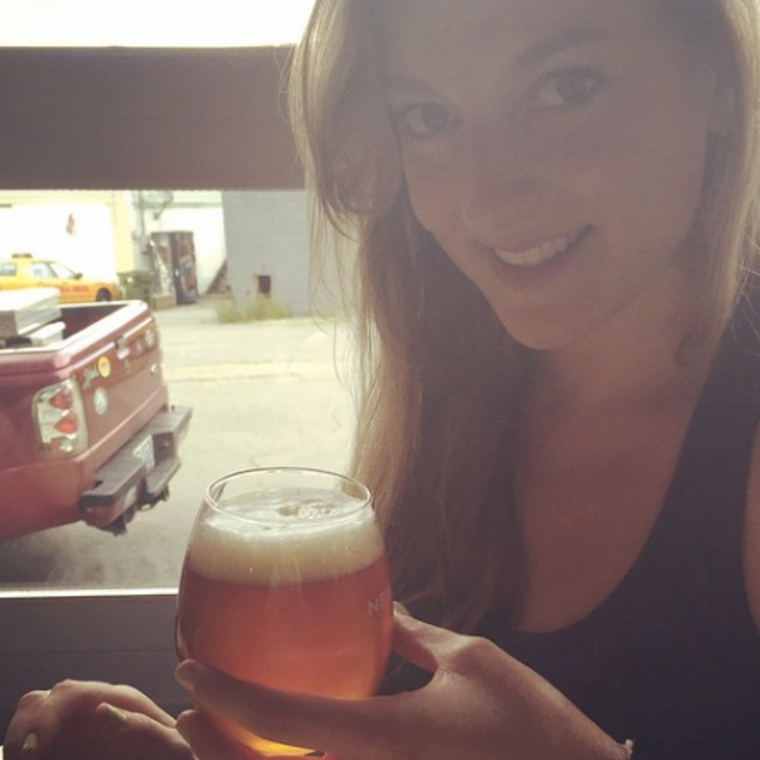What Marissa Nadler Learned From Her Stripped-Down Viral Hit
The Spooky Songwriter Explains Why She’s Unleashing Her Home Recordings Without Big Studio Magic
Marissa Nadler cares for all of her hundreds of songs, no matter how twisted, sad or deep. She gives them space to live as they weave in and out of her fans' fostership. Out of 14 albums— seven commercial and seven self-released—she has her favorite tracks, sure, but there’s a standout in the litter, and, for a while, she had to figure out why it was so different.
If you check out Nadler’s impressive discography on Spotify, you’ll find there’s one song that’s gotten 43 times more spins than her other songs. “Leave the Light On,” a demo that doesn’t have a home on any of Nadler’s records, sits atop her popular tracks, with 18.9 million listens. The rest of her songs snuggle safely together in the six figures.
“I first thought that it was just a fluke of playlists and stuff,” Nadler said, calling from the White Mountains in New Hampshire. “But I realize I think it’s because I hit the chorus quicker than my other songs. It’s as simple as that.”
The song is a rougher cut, compared to the more produced work she’s released. It’s sweet and major-keyed. The guitar sounds like a harp, fluttering in and out of Nadler’s harmonized soprano. In it, she sings about welcoming back a lover she’s already discarded. It’s a tad more relatable than the murder ballads she crafted earlier in her career, like 2004’s "Undertaker,” a song about Virginia Woolf’s suicide, or “Box of Cedar.”
“Last thing that I said to you
In the driveway, muttering profane
'I never want to see your face again'
But I will leave the light on
Leave the light on
In case you're coming back”
The success of “Leave the Light On” inspired Nadler to release a whole set of home recordings by the same name, exclusively on Vinyl Me, Please. While “Leave the Light On” was recorded on a laptop, the rest of her demos were birthed out of her makeshift home studio, which consists only of a microphone, an interface and a computer. Usually, after cutting her demos, she’ll take them to other producers and fancier studios, but with the Leave the Light On compilation, which contains 11 demos from 2014’s July era and onward, listeners get to hear what the songs sound like before they even left her house.
“I love high fidelity, but I’ve always loved to listen to intimate recordings of people,” Nadler said, citing Elliott Smith, Willie Nelson and Bruce Springsteen’s home recordings as her favorite. (She covers Smith’s “Pitseleh” on this compilation). “It makes it sound like you’re next to them.”
Listening through Leave the Light On, you take a seat next to Nadler as her imagination spins stories. In one song, you’re standing outside your ex’s house, and in another, you’re passing through centuries. In “1923,” you’ll empathize for a time-traveler’s wife, who falls in love with someone from the past.
“The song is definitely about being separated,” Nadler explains of her fictional world. “In a very romantic way of looking at, it is thinking about the actual cosmic force that’s working against you. You’re kind of fated to be separated because they’re stuck in different centuries.”
Nadler tells grand tales with her spooky lyrics, but she also creates vivid imagery with sonic devices. She plays all the instruments, including a tinny 12-string guitar on “Dead City Emily” and a Juno synthesizer that feels like a gush of cool, humid air on “High on the Road.” She doubles up on her vocals in almost every track, adding the soft depth it takes to tuck you in for a bedtime story.
“It’s part of the writing process for me to write the harmony,” Nadler said. “If I’m hearing a harmony on a vocal, I’ll put it down during the demo process just so I don’t forget it. Most of the time, I’ll get attached to it and kind of use it when we re-record it, even if it’s an instrument that takes the place of it.”
You’ll hear extra clavinet, bass and more on the versions of the songs that materialize on projects like *July *and *Strangers *—and it’s all with a crisper sound—but there’s rarely ever percussion. Nadler said she hopes to attract the people who are “turned off” by drums. Needless to say, there’s no frills; with Nadler, it’s all about the bare-bones song.
“If a song sounds good, I try to walk away and have things sound as simple as possible,” Nadler said. “In terms of tricks, the only real trick is super hard work. I put the time in.”
While it might be frustrating for some artists to have one song take off faster than others, Nadler is using it as a teaching moment.
“It was reassuring because it showed me that it’s more about the song than any amount of money that you spend on recordings,” she said.
And with no fancy equipment necessary, she encourages people to get into DIY demoing themselves, too.
“Just go for it. It’s pretty fun and rewarding to layer. It’s good to train the ear too,” Nadler said.
After all, you never know if you have an unexpected, lo-fi “Leave the Light On”-type hit just waiting to wiggle its way from the cozy incubator of your brain onto your laptop microphone.
Join the Club!
Join Now, Starting at $44Exclusive 15% Off for Teachers, Students, Military members, Healthcare professionals & First Responders - Get Verified!




